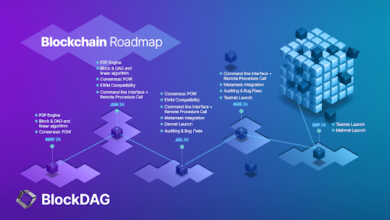The Evolution of Blockchain: From Bitcoin to Smart Contracts

Introduction:
Blockchain technology has revolutionized the way we perceive and conduct transactions, from its humble beginnings with Bitcoin to the more sophisticated smart contracts. This transformative journey has not only reshaped the financial landscape but has also permeated various industries. In this article, we delve into the evolutionary path of blockchain, exploring its milestones and the emergence of smart contracts.
The Genesis:
Bitcoin and Cryptocurrencies
The inception of blockchain can be traced back to the introduction of Bitcoin in 2009. Created by the elusive Satoshi Nakamoto, Bitcoin pioneered the concept of a decentralized, peer-to-peer digital currency. The revolutionary blockchain technology underpinning Bitcoin allowed for transparent and secure transactions without the need for intermediaries. This marked the beginning of a new era in finance, challenging traditional banking systems and introducing the concept of decentralization.
Beyond Currency:
Blockchain’s Expanding Horizons
As blockchain gained momentum, its applications extended beyond the realm of cryptocurrencies. The technology’s ability to create tamper-resistant and transparent ledgers garnered attention across industries. Companies began exploring blockchain for supply chain management, healthcare, and even voting systems. The decentralized nature of blockchain offered solutions to long-standing issues, fostering trust and efficiency in various sectors.
The Rise of Smart Contracts
One of the pivotal developments in blockchain evolution was the introduction of smart contracts. Emerging from the Ethereum platform in 2013, smart contracts automated and self-executed predefined agreements without the need for intermediaries. This innovation facilitated a broader range of applications, from decentralized finance (DeFi) to decentralized autonomous organizations (DAOs). Smart contracts not only streamlined processes but also introduced a level of transparency and security previously unattainable in traditional contractual arrangements.
Interconnectivity and Interoperability
As blockchain continued to evolve, the need for interconnectivity and interoperability became apparent. Various blockchain platforms emerged, each with its unique features and use cases. Interoperability solutions, such as cross-chain protocols, began to bridge the gap between different blockchains, enabling seamless communication and collaboration. This development further enhanced the versatility and applicability of blockchain technology.
Challenges and Solutions
Despite its advancements, blockchain faced challenges such as scalability, energy consumption, and regulatory uncertainties. Innovations like sharding, consensus algorithm enhancements, and the development of eco-friendly blockchain alternatives addressed these issues. Regulatory frameworks also started to take shape, providing a more stable environment for blockchain projects to flourish.
The Future Landscape
Looking ahead, the evolution of blockchain is poised to continue shaping our digital future. Integrating emerging technologies like artificial intelligence, the Internet of Things, and quantum computing with blockchain holds the potential to create even more robust and versatile systems. As industries adopt blockchain solutions, the technology is set to become an integral part of our daily lives, ushering in a new era of decentralized, secure, and transparent interactions.
Conclusion:
In conclusion, the journey of blockchain from Bitcoin to smart contracts represents a remarkable evolution. From its roots in cryptocurrency, blockchain has blossomed into a multifaceted technology with the potential to redefine how we transact, communicate, and trust in the digital age. As the technology continues to advance, the synergy of blockchain with other cutting-edge technologies promises a future where decentralized, transparent, and secure systems are the norm.





